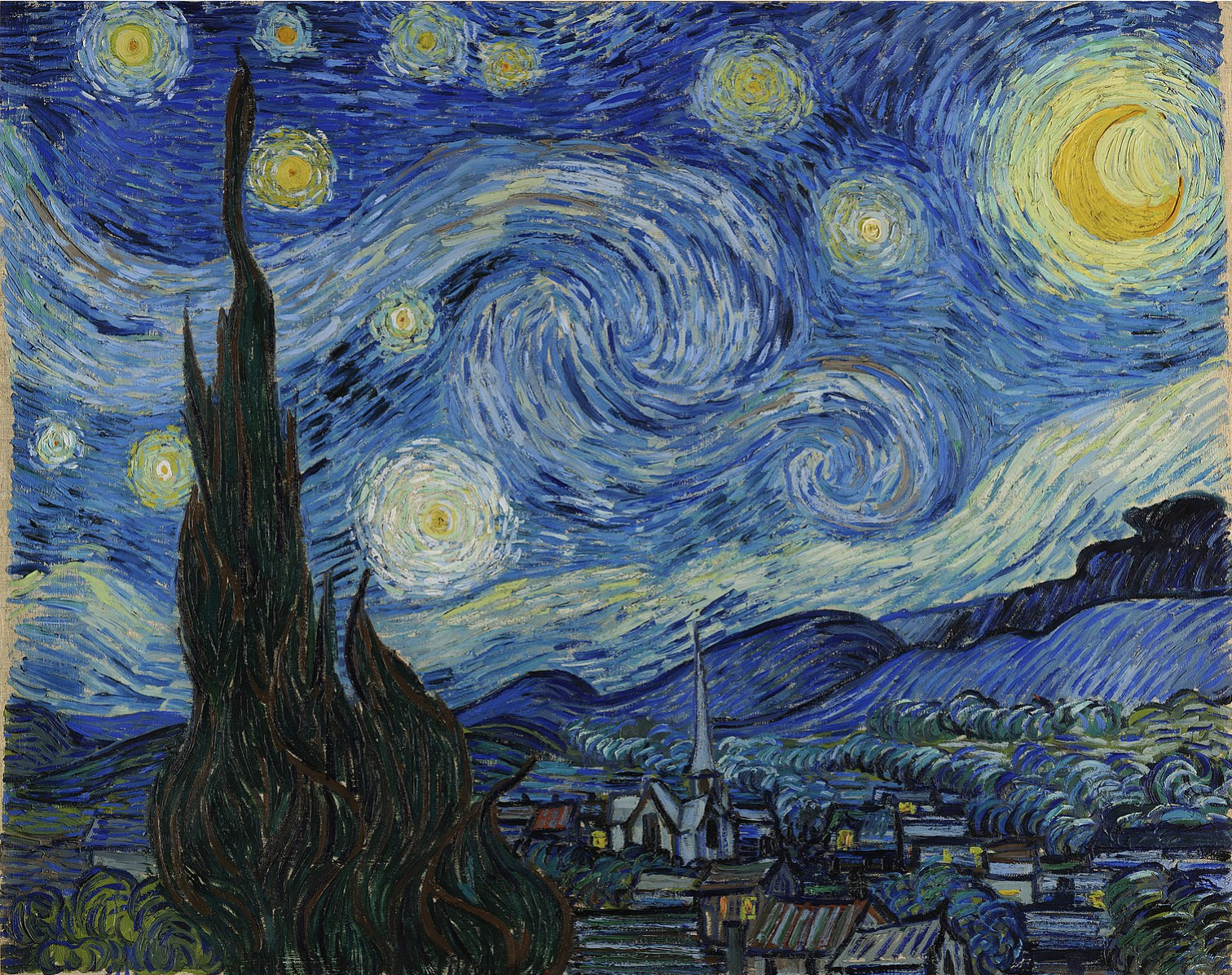Teach This Poem, though developed with a classroom in mind, can be easily adapted for remote-learning, hybrid-learning models, or in-person classes. Please see our suggestions for how to adapt this lesson for remote or blended learning. We have also noted suggestions when applicable and will continue to add to these suggestions online.

Look closely at the image of the famous painting Starry Night by Vincent Van Gogh.
The following activities and questions are designed to help your students use their noticing skills to move through the poem and develop their thinking about its meaning with confidence, using what they’ve noticed as evidence for their interpretations. Read more about the framework upon which these activities are based.
- Warm-up: Look closely at the image of the famous painting Starry Night by Vincent Van Gogh. What colors and images stand out to you in the painting? Why? Look again. What else do you see in the painting? What mood does the painting have? What makes you say that?
- Before Reading the Poem: Listen to Yasmine Hamdan’s NPR Music Tiny Desk Concert. What lyrics or sounds stand out to you? Why? How does her music make you feel? Based on your listening, what do you think of the poem’s title “Reflections”?
- Reading the Poem: Silently read the poem “Reflections” by Ameen Rihani. What do you notice about the poem? Note any words or phrases that stand out to you or any questions you might have.
- Listening to the Poem (enlist two volunteers to read the poem aloud): Listen as the poem is read aloud twice, and write down any additional words and phrases that stand out to you.
- Small-group Discussion: Share what you noticed about the poem with a small group of students. How does this poem connect to and differ from the song and the painting from the beginning of class? Why?
- Whole-class Discussion: What do you think of the title “Reflections”? How might the poem be different without this title, or can you think of another?
- Extension for Grades 7-8: In honor of National Poetry Month, create a digital anthology of poetry. These poems might have similar themes to Rihani’s poem, or they might evoke new themes. Then, create three discussion questions about your selected poem. During National Poetry Month, read one poem from your anthology each day, and use your questions to discuss these poems. (Teachers, you can learn more about National Poetry Month here, as well as find more lessons and materials. Happy Poetry Month!)
- Extension for Grades 9-12: Learn more about Ameen Rihani, and read more of his work. In honor of Arab American Heritage Month, read more Arab American poets here. Choose a poet to read and learn more about. Create a presentation that celebrates your chosen poet’s work. Present to your class.
“Mahjar, derived from hijra, Arabic for ‘migration,’ refers to a movement of poets and writers from Syria and Lebanon to the Americas that began around 1850 and continued into the twentieth century. Most were fleeing from political oppression and religious persecution, as a majority of the emigrants identified as Christian. Though Mahjar writers contributed to every genre of literature, in addition to working as journalists and political activists, their greatest contribution was to poetry.” Read a brief guide to the Mahjar.
